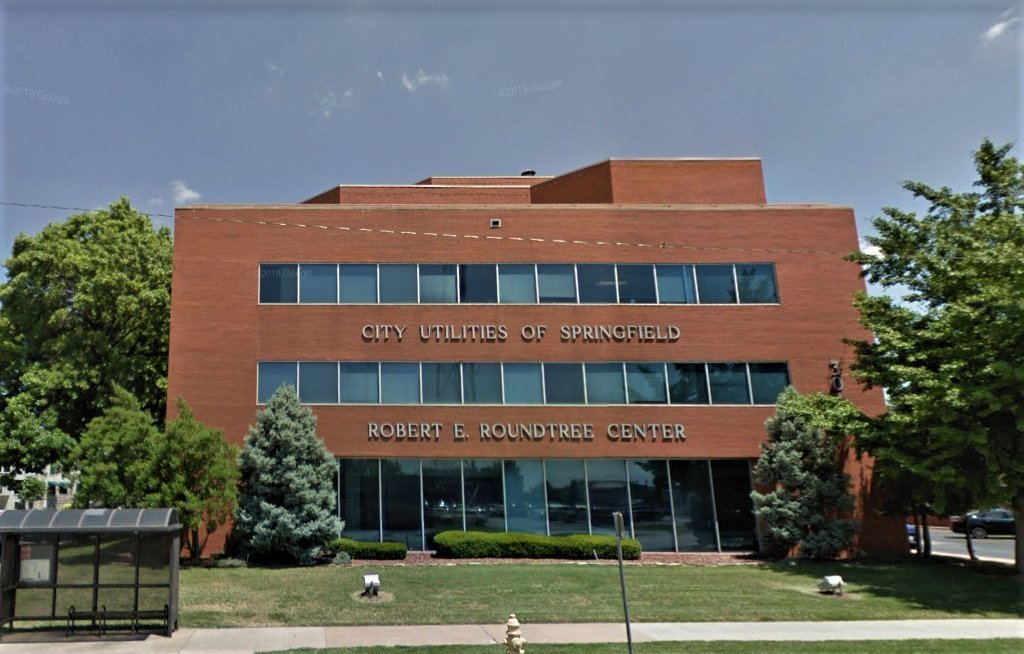YOUR BUSINESS AUTHORITY
Springfield, MO
YOUR BUSINESS AUTHORITY
Springfield, MO

City Utilities of Springfield’s operating budget for fiscal 2023, which begins Oct. 1, is up for approval at the Sept. 19 meeting of Springfield City Council.
The utility projects revenue of $607 million in fiscal ’23, a decrease of $34 million over the 2022 budget. Expenditures are projected at $604 million, down from $651 million in 2022. CU projects capital expenditures at $62 million, a decrease from $115 million in 2022, a figure that included $34 million for fiber expansion.
While the upcoming budget does not include cost increases for customers, fiscal 2024 is planned to begin three years of increases – 4.5% hike to the base rate in October 2023, 4.7% in October 2024, and 4% in October 2025.
Amy Derdall, CU’s vice president and chief financial officer, presented the budget to council for its first hearing on Sept. 6.
She highlighted the fact that CU’s energy sources are 42% renewable, including hydroelectric, wind and solar power. About 43% is from coal, 4% from natural gas and about 10% from market purchases.
In an interview with Springfield Business Journal, Gary Gibson, CU’s general manager and CEO, said the renewable rate is higher in Springfield than for most cities, and it’s higher than the state’s suggested renewable rate of 15%.
“We’ve had some really good success stories where businesses locate to Springfield because we have 40% renewable,” he said.
He offered Vital Farms, an egg production facility which doubled the size of its facility in May, as a good example of a business that cared about using renewable energy.
“It was really important to them,” Gibson said. “When they came and they heard our renewable portfolio was between 35%-40%, they said, ‘We love that.’”
Gibson said CU’s goal is to use 75% renewable energy by 2035 and be decarbonized by 2050.
Citing figures from the Energy Information Administration, Derdall told council Springfield customers have on average 27% lower electric rates than national peers, and 13% lower rates than state peers. Natural gas prices are 1% lower than national peers and 3% lower than state peers.
On natural gas, she noted, “We do continue to see those higher than we would like. The global supply as well as the demand is having impact on prices overall.”
The cost is mitigated by having firm gas contracts, adding inventory in summer when price is lower and obtaining discounts on prepaid contracts, she said.
Even so, natural gas prices are expected to rise sharply.
“We are expecting those to see about a 30% increase over the prior year,” she said.
Derdall said CU passes through fuel costs dollar for dollar to customers.
“We are seeing higher fuel costs as a whole because of global markets and supply and demand,” she said. “Natural gas is at a higher cost than we have seen for many years, and that results in higher natural gas prices that we incur that are passed through to the customer.”
She noted higher natural gas prices also impact prices on the electric side.
“It’s important for people to know how hard we truly work to try to keep those costs as low as possible,” she said.
Derdall said the average home in the winter months during normal weather pays $165 for natural gas, but in the coming winter, that cost is expected to climb to $205 for the same level of consumption.
Derdall said after March 2023, customers will no longer be repaying the utility for gas used in February 2021 during Winter Storm Uri, when gas prices were at an unprecedented level. Gibson said prices rose from about $2 per dekatherm to $630 per dekatherm during that storm, which caused much of the state of Texas to lose power.
Springfield’s supply during Uri would have been more concerning were it not for CU’s curtailable customers, about 30 of the largest customers on the system that use large quantities of natural gas.
Curtailable customers can be taken off the system at any time, as they have their own backup fuel systems.
“We wouldn’t have been able to make it through the cold snap without them,” said Gibson, noting the customers were off the system for a total of six days.
One change to the 2023 funding plan would reduce the financial penalty for curtailable customers that do not exit the system. Gibson said one customer was forced to stay on the system for six hours during the period in question, and they ultimately had to use 3D printing to produce a new part for their backup fuel system. With the sudden surge in fuel prices, that company would have had to pay millions of dollars for the six hours they remained on the system had council not approved an exception for them.
Curtailable customers pay less during the year without the pipeline capacity and storage services that other customers pay for.
Cedars Family Restaurant has cooked up comfort for over three decades.
Aquatic center fronting Sports Town in the works
Spring 2024 Construction in the Ozarks
SPD issues 36 citations to businesses for violating city’s gaming machine ban
Lost & Found Grief Center hires executive director
Nixa spokesperson takes job with city of Joplin